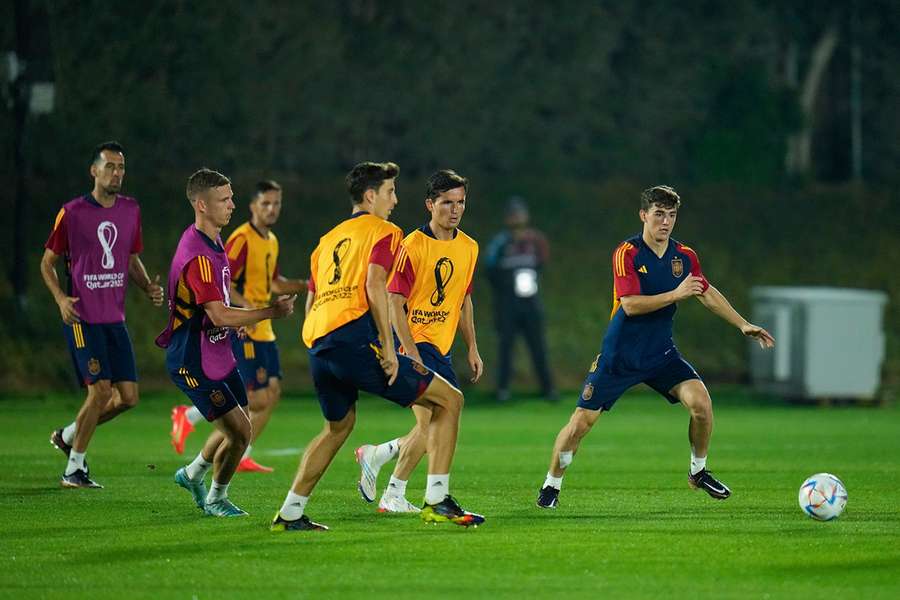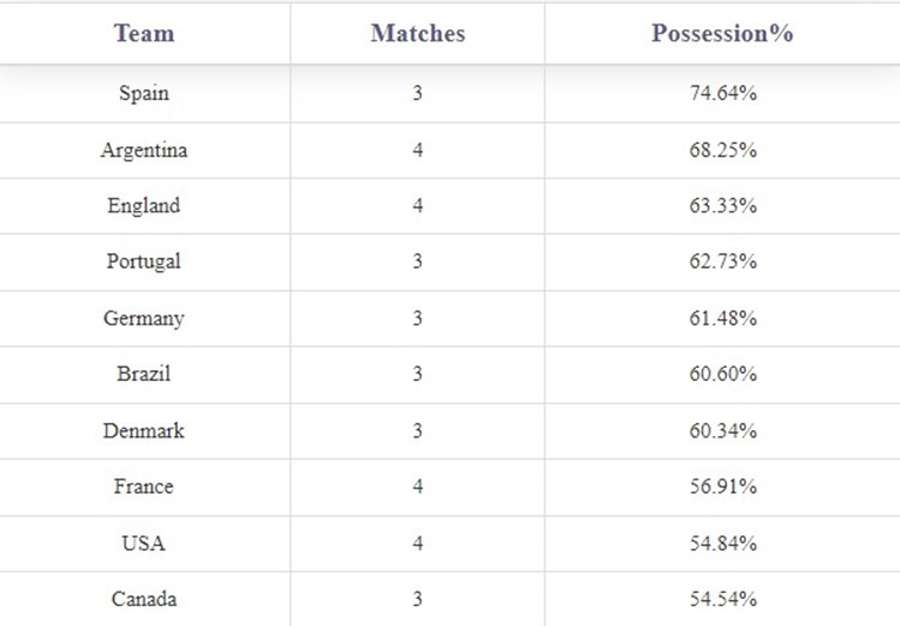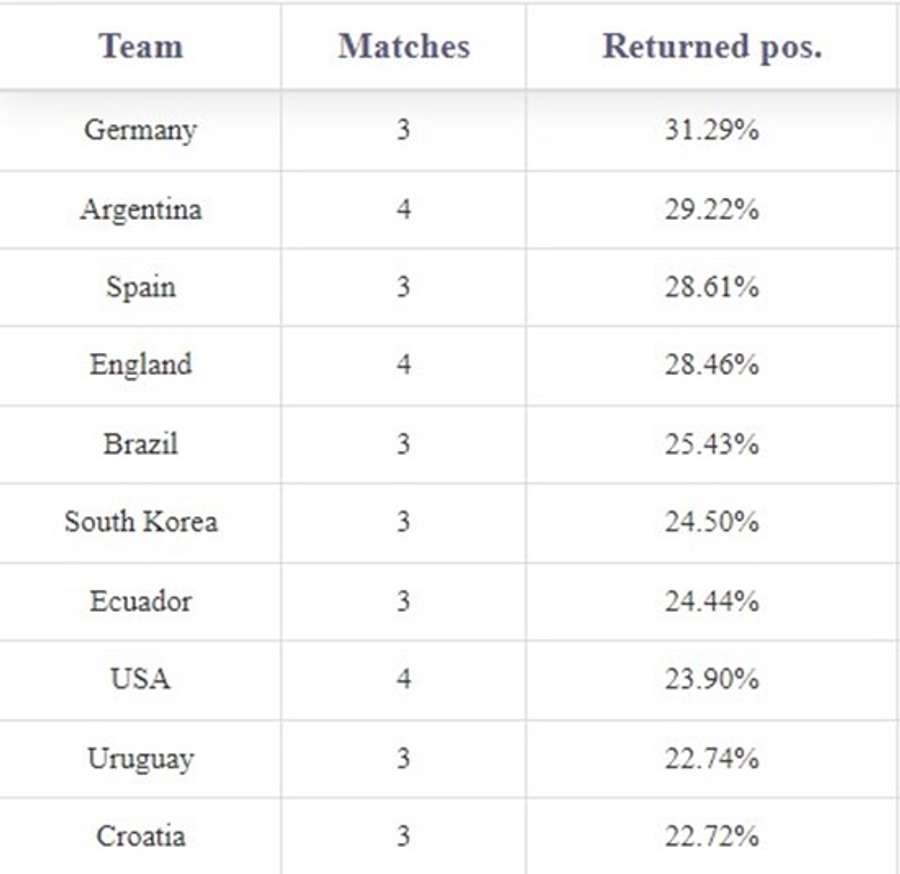11Hacks Data analysis: Spain's style of play at the World Cup

The main features are quite evident; possession of the ball, high number of passes, constant movement and active pressing in the high block. At 11Hacks, we can use data metrics to accurately describe how the Spaniards perform in these key activities compared to other teams in Qatar.

Possession statistics show Spain dominate the ball with 74.64%, ahead of second-placed Argentina (68.25%) and third-placed England (63.33%). At the opposite pole of the table we find Costa Rica, Japan and Poland, all just above the 30% mark. And yes - the first two teams faced Spain in Qatar.

The effort to control the game is also reflected in the average number of passes per sequence; a sequence is a possession of the ball that starts with a controlled action on the ball (i.e. a pass or dribble) and ends with a defensive action by the opponent, a shot or an interruption of play. The Spanish pass an average of 6.22 times per sequence, significantly more often than second-placed Argentina with 4.84 passes.

This style of play is reflected, for example, in the number of counterattacks. While you will see France, Brazil or Portugal go on the break five times per match during the match, the Spaniards only once.
They are currently playing with the fourth highest defensive line in the tournament. We calculate this by monitoring the average vertical distance of active defensive actions, among which we include performances against the opponent, intercepted passes or even fouls. The Spaniards stop the opponent's actions at an average of 51 metres, i.e. comparable to Germany. Brazil hits a metre higher, and England is even at 54 metres. The tournament average is 45.6 metres.
Only the Mexicans attacked the opponent's play more intensively, who tried to thwart roughly every fifth pass with their defensive intervention. Spain is at seven, along with Brazil, the Netherlands and Ecuador. The average in the tournament is around 11 uninterrupted passes.
The Spanish press is not only one of the most intense in the tournament, but also one of the best. If Luis Enrique's men lose the ball in the opposition half, they win it back within 10 seconds 28.61% of the time, third behind Germany and Argentina.

Control over the midfield is also reflected in the ability to win a high percentage of rebounds. They excel in this activity together with Brazil, Germany and Denmark, behind which they rank fourth. If we move from the middle to the last third, there Spain is even the second best behind Brazil.
There is no doubt that they are the most dominant team in the spaces between the two goals at the World Cup, but the question is: how they will do in the other parts of the field in the knockout stage? From the point of view of the quality of the chances created and conceded, they had the tenth best attack and the eighth defense in the group stage. Decent numbers, but not elite. For example, eleven other teams are more active in the number of passes within 20 metres of the opponent's goal. Nine shots.
Japan gave the other teams the recipe for forcing the Spaniards to make mistakes. Already during the first half, at 1-0, they began to gradually attack the Europeans' play at a high level, with the aim of putting it under pressure and disrupting the pace of the game. Right from the start of the second half, even with the help of Mitoma and Doan alternating, the Japanese stepped up their efforts even more and the result was their equalising goal.
With pressure in the final third, they reached the lead shortly afterwards and for the rest of the match they played in a low block, carefully defending and looking for space for a possible break situation. Will Morocco coach Walid Regragui try to do the same or are there other ways to beat Spain?
